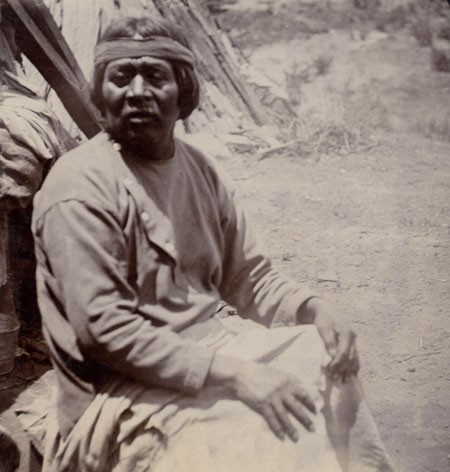Progressive Era: 1890–1920s: Native Americans Fight for Land, Identity, & Education
 Man identified as a "North Central Sierra" California Indian. 1920. Photographer unknown. Gelatin silver print. Collection of Oakland Museum of California.
Man identified as a "North Central Sierra" California Indian. 1920. Photographer unknown. Gelatin silver print. Collection of Oakland Museum of California.
"My people do not know when they are citizens and when they are not."
- Emma D. Johnson, speaker at the Society of American Indians 1911 convention
This man is simply identified as a "North Central Sierra" California Indian. After implementation of the Dawes Act, many California tribes simply ceased to exist legally for both the California and U.S. governments. As a result, the California government lumped different California Native Americans together in broad geographic groups, although they often spoke completely different languages and had very dissimilar cultures.
California Native American received state citizenship on June 2, 1924. However, today some California Native Americans find that they are no longer legally considered Native Americans by the California or U.S. governments, because they are identified by geographic group, not tribe.